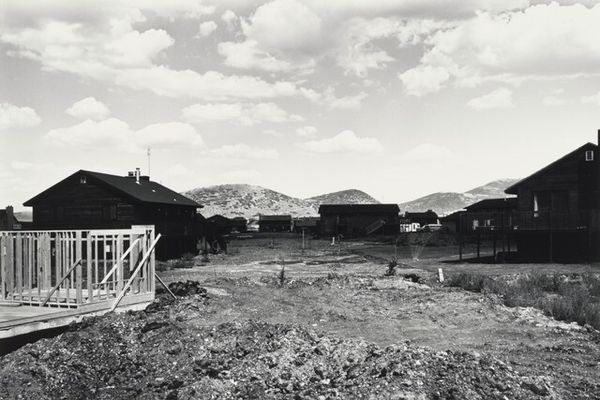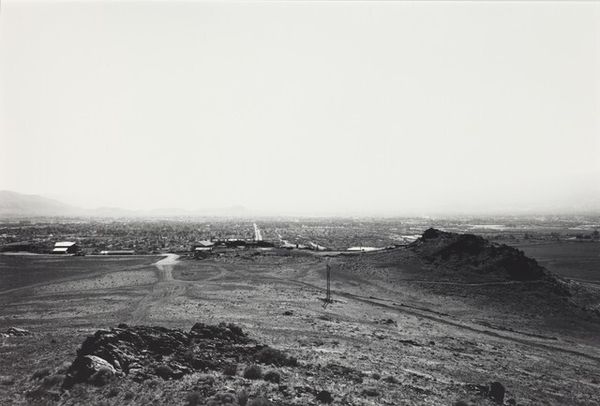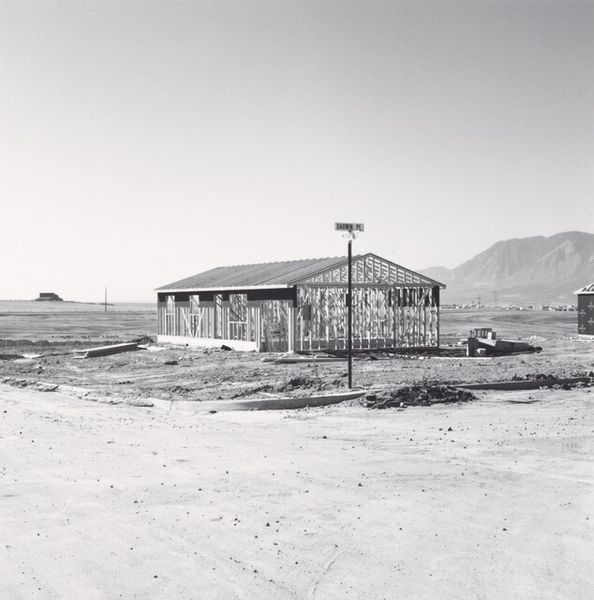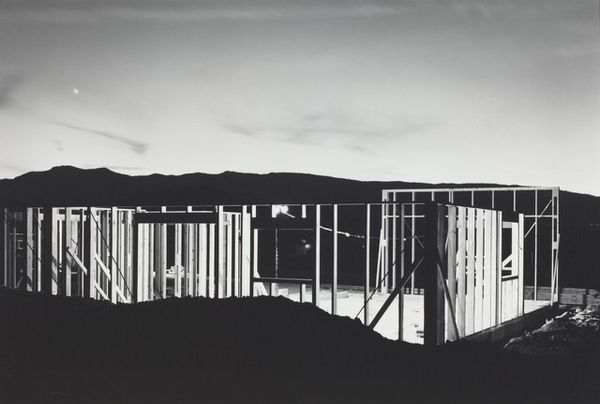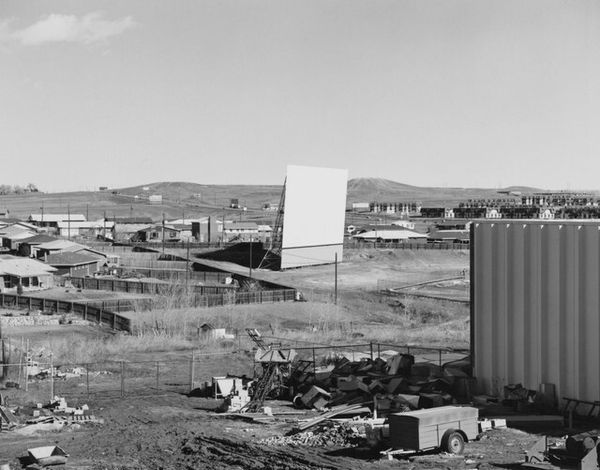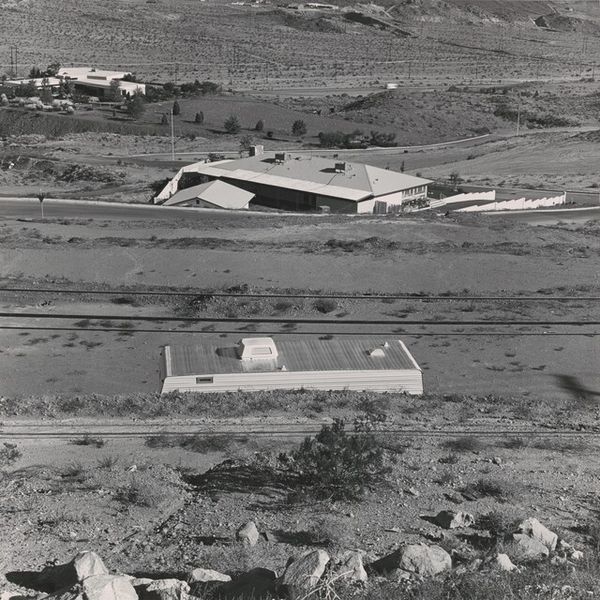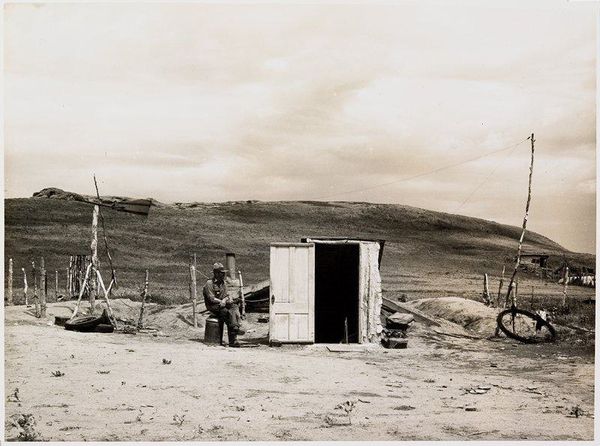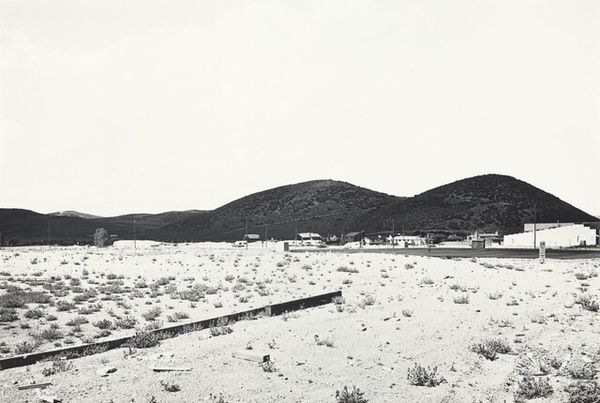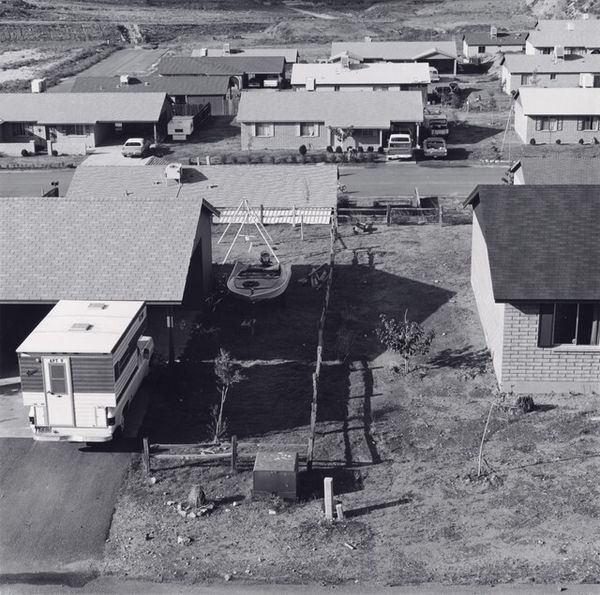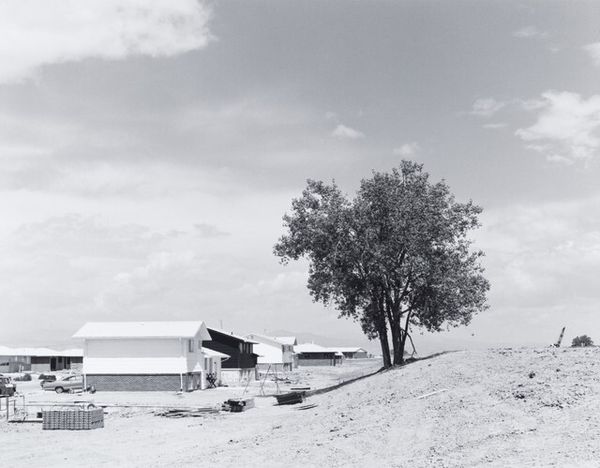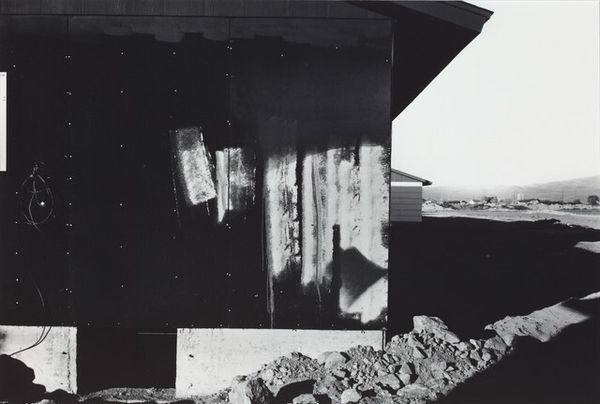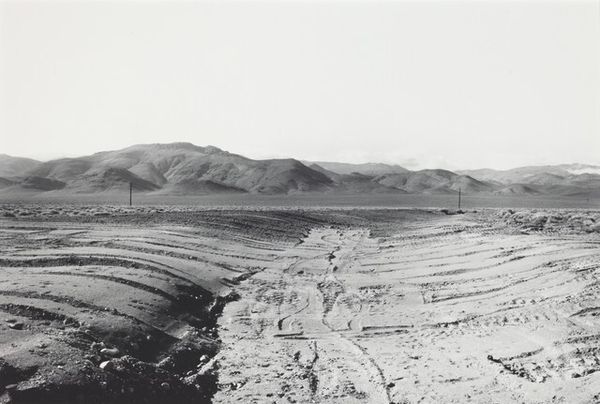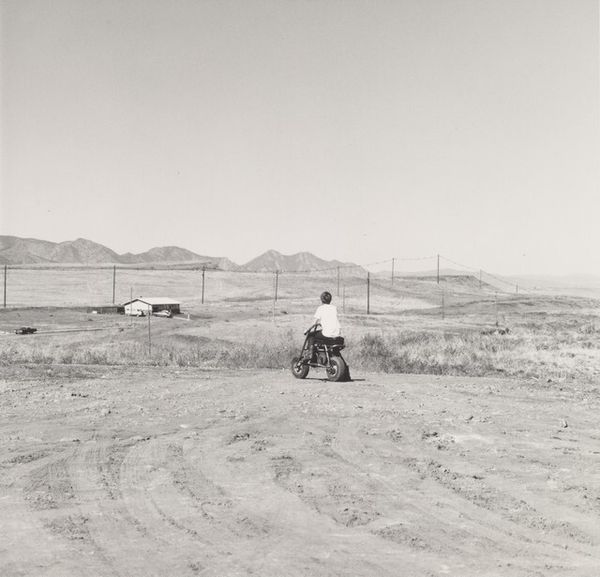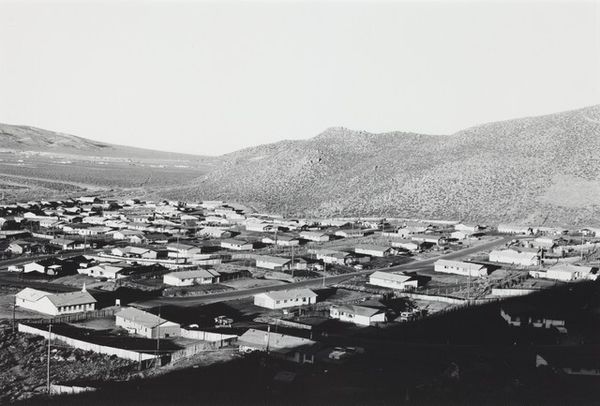
photography
#
architectural landscape
#
architectural modelling rendering
#
building design
#
building
#
landscape
#
photography
#
manufacturing plant design
#
industrial style
#
architectural proposal
#
cityscape
#
prototype of a building
#
building photography
#
realism
#
construction design
Dimensions: image: 22.86 × 29.2 cm (9 × 11 1/2 in.) sheet: 27.7 × 35.4 cm (10 7/8 × 13 15/16 in.)
Copyright: National Gallery of Art: CC0 1.0
Editor: This is Robert Adams' photograph, "New tracts, west edge of Denver, Colorado," likely taken between 1974 and 1981. It's a black and white image, capturing a newly developing suburban landscape. There's something bleak about it, a kind of quiet commentary on expansion. What do you see in this piece? Curator: I see a powerful commentary on the evolving American West, viewed through a critical historical lens. Adams isn't simply presenting a landscape; he’s highlighting the social and environmental impact of suburban sprawl. Think about the time. This was a period of rapid development, fueled by economic growth but also marked by anxieties about environmental degradation and social homogenization. How do you think the museum or gallery setting influences our interpretation of this photograph? Editor: That's interesting. I hadn’t thought about how the institutional framing impacts our view. Maybe placing it in a gallery makes us look for a deeper meaning instead of just seeing it as documentation. Do you see any tension between the aesthetic quality and the critical message? Curator: Absolutely. The formal beauty of the black and white tonality and the carefully composed scene draw us in, but the subject matter—the relentless, somewhat sterile development—creates a sense of unease. It’s a photograph that is both visually appealing and deeply unsettling. It raises questions about land use, community, and the very definition of progress. Consider also how the absence of people contributes to that feeling. Editor: It does feel depopulated, almost dystopian in a subtle way. I suppose that’s part of Adams' statement. Thanks, that gives me a lot to think about! Curator: Indeed. It’s a reminder of how art can be a powerful tool for social commentary and historical reflection. Looking closely unveils many stories.
Comments
No comments
Be the first to comment and join the conversation on the ultimate creative platform.
